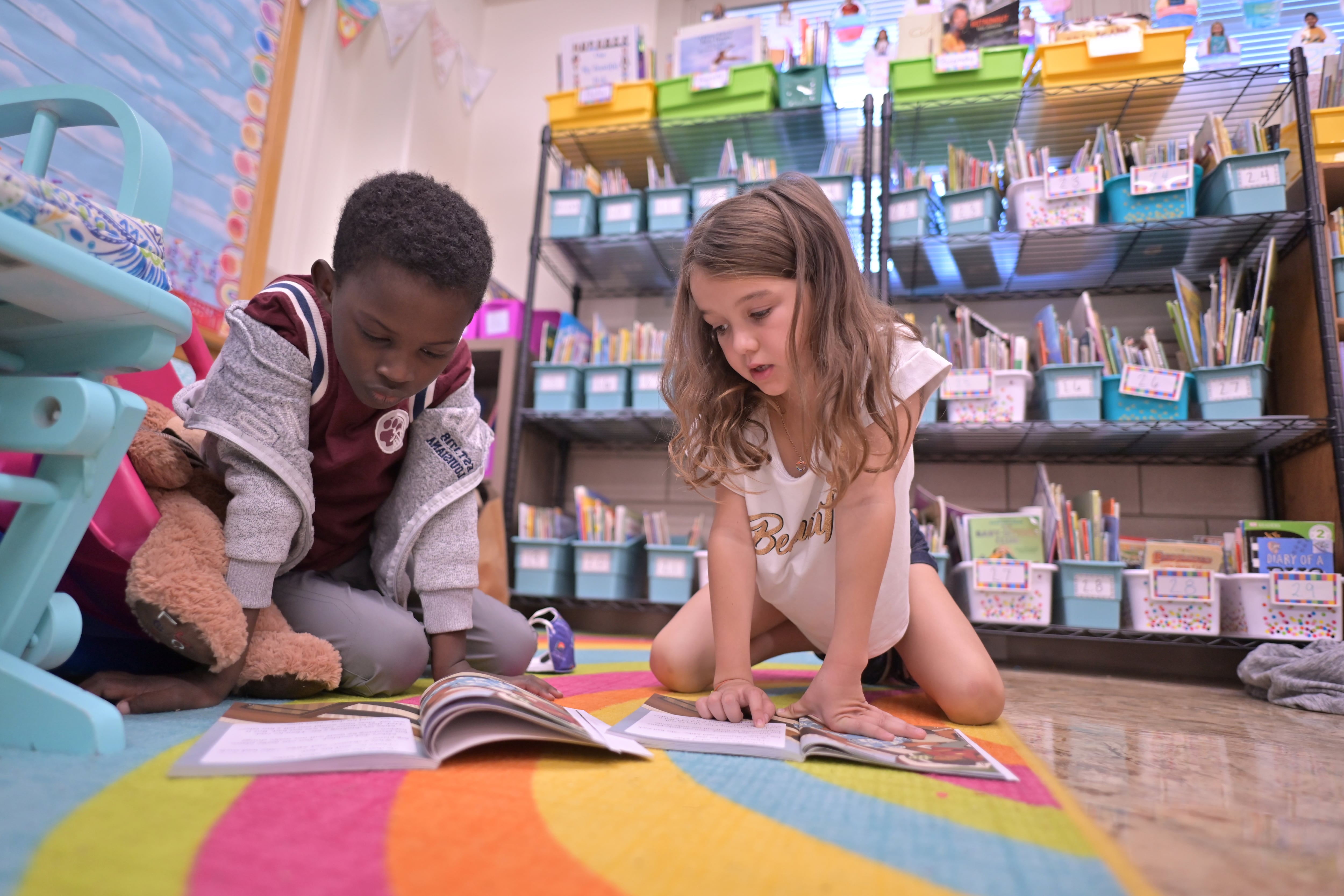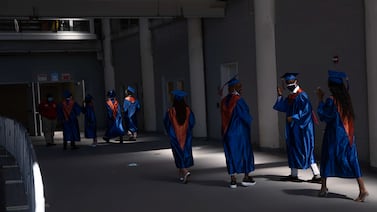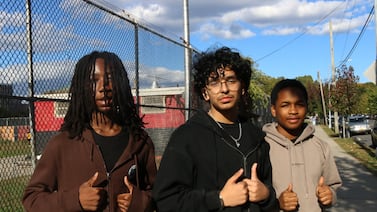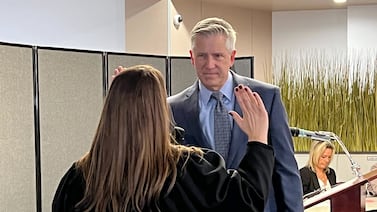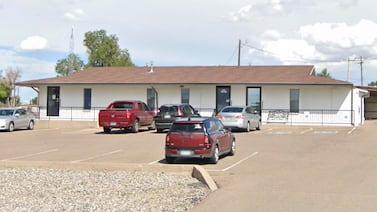Alongside tall tales about lumberjack Paul Bunyan and cowboy Pecos Bill, new reading lessons for Denver second graders will include the story of Doña Flor, a giant woman living in the American Southwest.
What students won’t get in those literacy lessons are books about Columbus, the first Thanksgiving, or Lewis and Clark.
That’s because Denver district officials have made a series of changes to the new reading curriculum rolling out in kindergarten through second grade at nearly 90 schools this year. In addition to stripping out units they felt perpetuated a whitewashed version of American history, they added several books in each grade intended to add a wider variety of voices.
The idea was to take a curriculum that had earned high marks for teaching kids to read and expanding their knowledge of the world and make it more culturally responsive. That is, to ensure it reflects the diverse histories and identities of students in Denver classrooms and the wider world.
Denver students will still learn about dropped history topics like Columbus through social studies coursework in various grades.
The decision to modify the new curriculum stems, in large part, from a recent student-driven effort to make lessons more inclusive of Black, Latino, and Indigenous history. The result of that effort — the “Know Justice Know Peace” resolution approved in 2020 — builds on previous efforts to revise curriculum that focused on Eurocentric perspectives.
Experts say culturally responsive education is good for all kinds of students, creating a more complete picture of the world and helping schools engage students.
“If our students see themselves valued and reflected and honored in that space, they’re more likely to learn,” said Casie Wise, who holds a doctorate in education and is senior program director at the National Indian Education Association.
Denver Public Schools is the largest school district in Colorado and one of the most diverse. Half of the district’s students are Hispanic and three-quarters are students of color.
The district’s efforts at greater inclusivity unfold at a time when many schools around the nation are being pressured to move in the opposite direction, with conservative parents or community members seeking to ban books that they say raise divisive topics, cover difficult subjects too early, or make white students feel anxious or ashamed. Schools in 138 districts removed or limited students’ access to books during the 2020-21 school year, according to the free speech advocacy group, PEN America.
Even in Denver, a progressive district where leaders frequently talk about equity and inclusion, there are signs recent events have had a chilling effect.
The district shared only eight of 30 book titles that district staff recommended be added to the new curriculum. District officials refused a Chalkbeat public records request for the full list, first saying they didn’t know if vendors would have all the titles, then citing deliberative privilege, an exemption invoked “if the material is so candid or personal that public disclosure is likely to stifle honest and frank discussion within the government.”
Leah Q. Peoples, who leads Transformative Research, a research firm that prioritizes educational equity, said the Denver district’s efforts to boost cultural responsiveness in its reading curriculum sound promising. She said between the demands put on educators and the political climate, such work can be hard to do.
It’s important for the district “to not let that first step be their last step,” she said.
Scorecard measures cultural responsiveness
Like many Colorado school districts, Denver is adopting new reading curriculum because of a 2019 state law that required schools to use scientifically-based reading programs in kindergarten through third grade. The old program used in most Denver schools didn’t meet that bar.
The district’s new state-approved reading program is called Core Knowledge Language Arts and is published by Amplify. It’s used in around two dozen Colorado districts and has generally earned high praise for thoroughly covering foundational skills and building students’ knowledge through a collection of science and social studies-themed literacy units. Experts say boosting students’ background knowledge improves reading comprehension. Core Knowledge also has a Spanish-language counterpart, Caminos, which is used in Denver schools that have dual language programs.
During the initial evaluation of Core Knowledge Language Arts and two other curriculum contenders, Denver officials used a tool developed by New York University, the Culturally Responsive Curriculum Scorecard for English language arts. (There’s also a version for STEAM — Science, Technology, Engineering, Arts and Math.)
The checklist, which Peoples co-authored, asks reviewers to consider a host of factors related to the characters, plot, and presentation of books and materials. For example, are people of color main characters or just sidekicks? Are female characters shown in a variety of roles? Do texts highlight the strength of non-dominant populations? Do they provoke questions about the societal status quo?
All three curriculums came up short on cultural responsiveness, but Core Knowledge Language Arts earned the best reviews overall. The district adopted the program — at a cost of $8.4 million — but decided to modify the knowledge-building half of the curriculum. The program’s foundational skills portion remains the same. The new curriculum has rolled out in most of the district’s K-2 classrooms and is being piloted in some third-grade classrooms.
Some history topics cut
After the curriculum review, district officials decided to drop two history-themed units per grade, among them “Columbus and the Pilgrims” in kindergarten, “A New Nation” in first grade, and “Westward Expansion” in second grade. Denver officials didn’t want materials from the eliminated units to show up in Denver classrooms, so they asked Amplify to remove them from the curriculum kits the district ordered.
The district also tacked on 10 more books to the curriculum in each grade — five for classrooms with English instruction and five for classrooms with Spanish. The new titles, which are meant to add missing perspectives, lengthen some of the units the district is keeping.
Molly Veliz, a teacher who works with struggling readers at Marie L. Greenwood Early-8 school, agreed with the decision to jettison some units, saying, “I’m really glad because for the strengths of [Core Knowledge Language Arts] … the weaknesses are pretty glaring in that it’s very Eurocentric and [takes] a settler viewpoint,” she said.
Veliz said she’s also happy about the focus on evidence-based reading practices in the new curriculum.
“Hopefully we’re going to be teaching way more of our students how to read,” she said. “That’s really equity in action right there.”
Megan Bobroske, a second grade teacher at Denver’s Bradley International School, was part of a six-member team that helped recommend second-grade books to add to some units. As the team reviewed the “Fairytales and Tall Tales” unit, they realized all four tall tales featured men. There were no female protagonists. To remedy that, they recommended adding Doña Flor for English classrooms and a tale about a tiny Incan Princess for Spanish classrooms.
“There is no perfect curriculum out there,” she said. So the question is, “How do we make what we have represent and make our students feel they are a part of this?”
Training goes awry
Things did not go smoothly when the district first rolled out the new reading curriculum during an online teacher training in August.
One session featured a video on Lewis and Clark. That lesson — part of the Frontier Explorers unit — wasn’t going to be taught in Denver classrooms and was only meant to serve as an example. But teachers didn’t know that and many were upset.
The next morning, before the second half of the training began, Jennifer Begley, the district’s director of humanities, apologized to the group of 100 teachers.
“We thank you for speaking up and calling this to our attention,” she said. “We’re deeply sorry for the harm that the video has caused.”
Begley also explained the district’s changes, including why some units had been cut: “There were several domains that centered white Eurocentric views and beliefs, places where history was omitted, and places where representation of authors and characters was not sufficient.”
In an interview with Chalkbeat, Begley said the reaction to some Core Knowledge units was, “This can’t be what we put in front of our students.”
She described how one frontier lesson described Thomas Jefferson as a friend to the Native Americans who wanted explorers to use gifts to maintain friendly relations with them.
But that benign portrayal fails to note that Jefferson was also a key architect of policies to remove Native Americans from their land.
Hannah Maldonado Villar, a first grade teacher at Barnum Elementary School, said she discussed some of the district’s modifications to the reading curriculum with a student’s mother during parent-teacher conferences this month.
“She was saying how as a white woman she is appreciative that her daughter is not going to learn such a white-centered history,” as the woman did in her childhood, said Maldonado Villar.
Kristine Frech, a spokeswoman for Amplify, said school or district modifications to Core Knowledge Language Arts are common.
“The No. 1 thing is that the integrity of the program stay intact,” she said.
Asked about Denver’s concerns over the cultural responsiveness of the reading curriculum, Frech said, “We take into account that feedback as we look at the program over time.”
She said the company has taken several steps in recent years to make the curriculum more representative, including creating a skills unit promoting student research that adds more diversity.
For example, an art-themed kindergarten unit includes a book about sculptor Ruth Asawa and Guatemalan textile weavers. The second grade aviation unit includes a book about the Tuskegee Airmen and another on female pilots in World War II.
Amplify also contracted with the National Indian Education Association to review certain curriculum components focused on Native Americans. Frech said the group helped Amplify rewrite a first-grade book about a Navajo girl’s summer vacation, providing authentic Navajo names and pronunciations, details about the setting, and help retelling the traditional Spider Woman story. A Navajo illustrator created the Spider Woman picture and contributed other art to the book.
Many programs fall short
Experts in culturally responsive education say many materials, including in math and science, can be culturally problematic. Besides homogeneous book characters or authors, shortcomings include misleading accounts of historical events, the perpetuation of stereotypes, and narrow portrayals of a group’s experience.
Peoples, of Transformative Research, said one common trope in lessons about people of color is that their lives are dominated by struggle.
“Slavery happened, wars happened,” but there’s so much more to the experience of people of color than oppression, she said. Joyful everyday moments need to be portrayed, too — playing with a dog, running for class president, or making the team.
Peoples said culturally responsive education is about reflecting other kinds of diversity, too — gender, class, and disability status, for example. And it must be thoroughly incorporated into learning experiences, not treated as a voluntary add-on.
“You cannot sprinkle culturally responsive education in,” she said.
Wise, of the National Indian Education Association, said the problem with many lessons on Native Americans is that they stop in the late 1800s or early 1900s.
“It basically gives students the idea that Native Americans no longer exist because they were conquered,” she said. It’s “not teaching history through the lens of the present.”
Bobroske, the second-grade teacher, saw the same kind of thing while her team was picking books to add to the new curriculum. In the immigration unit, there were stories about families coming to America generations ago, but little about modern day immigrants.
“Immigration isn’t just something that happened at the turn of the century,” she said, noting that many Denver students are immigrants themselves.
Bobroske’s team recommended adding the English and Spanish version of a book called “Areli is a Dreamer,” by Areli Morales, a contemporary story about a young immigrant who qualified for the Deferred Action for Childhood Arrivals program, or DACA.
Part of the goal with the additional books is to get students connected to the content.
“If they’re invested, you’re gold,” Bobroske said.
Ann Schimke is a senior reporter at Chalkbeat, covering early childhood issues and early literacy. Contact Ann at aschimke@chalkbeat.org.

